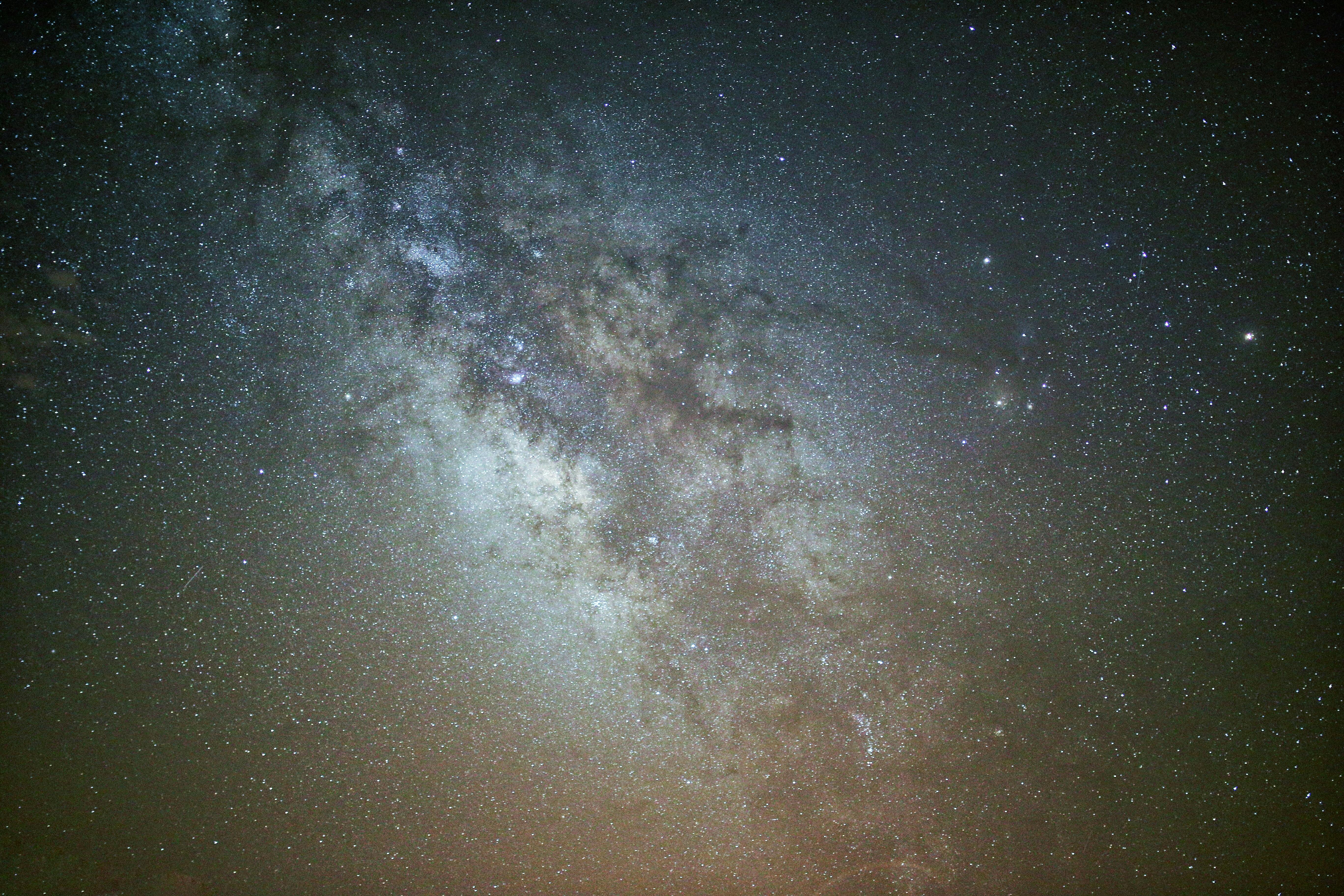Color remains among the major defining features of any object, contributing in determining our perception of everything we behold. Although the blue sky—the ceiling of our life on Earth—is the farthest horizon our eyes can see, colors go much more beyond it, shaping a wonderful cosmos of colors.
Cosmic Latte
The sky—blue studded with a glorious orange Sun during daytime, black bejeweled with sparkly star clusters at night—is what we can see of the outer universe. It was not until a few years ago that scientists realized that the actual color of outer space is far less dramatic; it is beige!
A team of astrophysicists from John Hopkins University conducted a survey in which they studied more than 200,000 galaxies, and discovered that the light emitted from them all, when blended according to what the human eye would see, produces a color they dubbed ‘cosmic latte’.
“You can think of this as what the eye would see if we put all the light in the Universe through a prism(1) to produce a rainbow. The intensity of the color is in proportion to its intensity in the Universe”, explained astrophysicists Karl Glazebrook and Ivan Baldry. Depending on the adaptation of the eye to different amounts of light, the color would vary between pale pink, soft turquoise, and most significantly: cosmic latte.
The survey, which reached out several billion light years, was not intended just to calculate this average color; it revealed a lot about the history of star formation in the universe, which is basically responsible for the changes taking place in the cosmic spectrum.
A star has a life cycle in which it changes colors as it changes temperature and size over billions of years. Young hot stars are blue, then they gradually get redder as they grow up and expand in size to become red giants; they end up as white or black dwarfs. Accordingly, just as the color of the sky changes at sunset, the universe started blue with young blue stars, and grew gradually redder with the evolution of a generation of giant red stars.

Cosmic Black
Even when dying, stars add a touch of color to the universe. When a massive‑sized star dies, its nuclear fusion reactions stop. At the same time, its gravitational field starts pulling matter inward, compressing the star’s core and causing it to heat up. As a result of excessive heating, a huge supernova(2) explosion, in which the material and radiation blasts out into space, takes place.
What remains after this magnificently colorful explosion is the highly compressed massive core, the gravity of which becomes so strong that even light cannot escape; this is what scientists call a ‘black hole’.
Once a black hole is formed, it becomes too black to appear because it pulls all the light into its center. Yet, scientists can spot black holes through observing the behavior of stars in space. Stars close to black holes produce a high-energy light that can be identified using special satellites and telescopes.
Luckily enough, black holes do not move around in space swallowing the celestial objects they meet; we are lucky our Solar System is safe away from any black holes. Yet, scientists have declared that there is a super-massive black hole at the center of each large galaxy; at the heart of the Milky Way lies Sagittarius A, a black hole the mass of which is 4 million times that of the Sun.

Glossary
- Prism: In optics, a prism is a transparent optical element with triangular base, rectangular sides, and flat polished surfaces that refract light.
- Supernova: A stellar explosion of great brightness through which the star ejects most of its mass.
*Published in PSC Newsletter, 2nd School Semester 2012/2013 issue.
References
telegraph.co.uk
pha.jhu.edu
nasa.gov
science.howstuffworks.com
huffingtonpost.com
universetoday.com
news.bbc.co.uk
moonphases.info
aerospaceguide.net